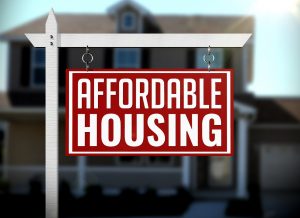 According to a year-end report and forecast from Redfin, just 15.5% of homes for sale during the 2023 calendar year were affordable for the typical household based on a standard 20% down payment and payments not exceeding 30% of the buyers monthly income.
According to a year-end report and forecast from Redfin, just 15.5% of homes for sale during the 2023 calendar year were affordable for the typical household based on a standard 20% down payment and payments not exceeding 30% of the buyers monthly income.
This number is down 20.7% from 2022 and more than 40% down from pre-pandemic times before the market boomed.
In addition, the number of affordable homes for sale also dropped to its lowest level on record. There were just 352,000 affordable listings in 2023, down 40.9% form the 596,135 affordable listings seen in 2022.
While this decline can be partially attributed to a general drop in listings altogether, this fact has also made the general home a bit more expensive to a tune of $250 per month. Elevated mortgage rates have also propped up housing costs by limiting supply. Many homeowners are staying put instead of selling because they don’t want to lose their ultra low interest rate. That’s bolstering home prices because it means buyers are competing for a limited pool of homes.
The good news is that housing affordability has already started to improve, and Redfin expects it to continue improving in 2024.
“Many of the factors that made 2023 the least affordable year for homebuying on record are easing,” said Redfin Senior Economist Elijah de la Campa. “Mortgage rates are under 7% for the first time in months, home price growth is slowing as lower rates prompt more people to list their homes, and overall inflation continues to cool. We’ll likely see a jump in home purchases in the new year as buyers take advantage of lower mortgage rates and more listings after the holidays.”
Looking at the numbers by race, home affordability was three times worse for black households than for white households. Only 6.9% of homes for sale in 2023 were affordable for the typical Black household, compared with 21.6% for the typical white household. The share was nearly as low for Hispanic/Latino households (10.4%) and was highest for Asian households (27.4%).
According to Redfin, housing has become unaffordable for a lot of Americans, but Black and Hispanic/Latino families have been hit especially hard because they’re often less wealthy to begin with. On average, these groups earn less money, have less generational wealth, and have lower credit scores (and sometimes no credit scores at all) than white Americans due to decades of discrimination. That makes it tougher to afford a down payment and qualify for a low mortgage rate. Black Americans, in particular, also frequently face racial bias during the homebuying process.
It’s worth noting that wages have grown faster for nonwhite households than for white households this year, helping to shrink the income gap. Rents have also started to fall, which disproportionately impacts communities of color because they’re more likely to be renters.
Click here to view Redfin’s findings in their entirety.

 theMReport.com Your trusted source for mortgage banking news
theMReport.com Your trusted source for mortgage banking news








